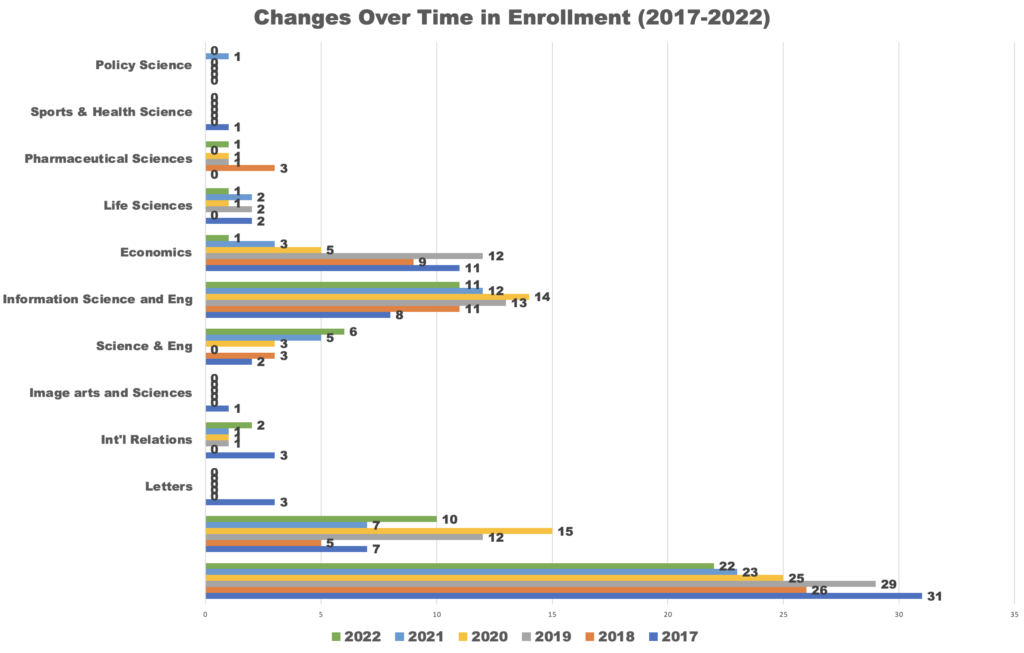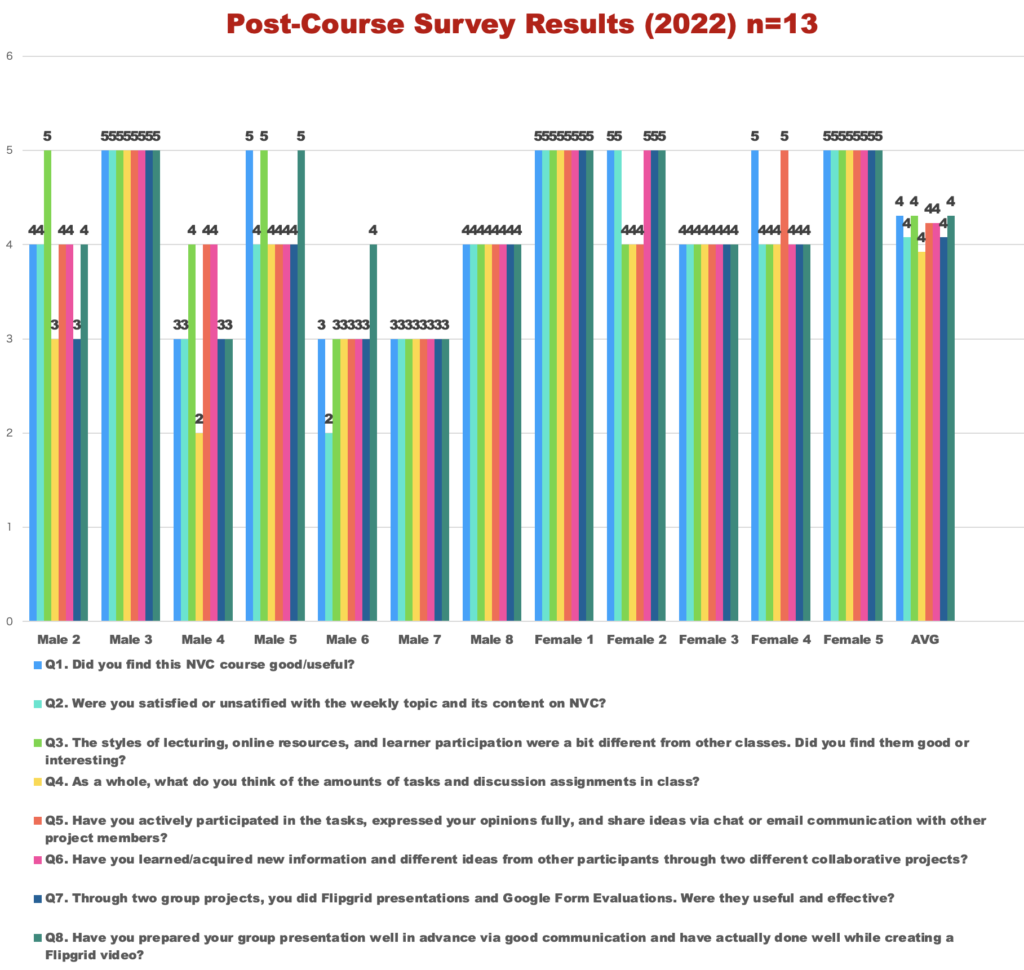I have been teaching Nonverbal Communication as one of the International Liberal Arts courses (English lectures) under the jurisdiction of the Faculty of Information Science and Technology, which has been ongoing up to the time of writing since the 2017 academic year. Since the style of taking this course is to limit the number of students to 30 or less by elective lottery, not everyone who requested the course could take it, and in a sense, it was expected that some students would take it unwillingly and some would not attend this class at all since they could not cancel their registration. Since 2005, the course has been taught in Japanese under the title of “Intercultural Communication” in the Language Communication Course of the Graduate School of Language Education and Information Science, and has been popular mainly among international students. However, this was the first time for me to teach this undergraduate course in English. Although the style of the course is open to all faculties, with the exception of the 2017 academic year, students enrolled in the course were mainly from the Kinugasa campus in Kyoto and the Biwako-Kusatsu campus in Shiga. The following chart shows the number of students enrolled in the program over the past six years (156 in total, 35.9% of whom are international students).
2017年度より執筆時点まで継続中の情報理工学部主管の国際教養科目(英語講義)の1つとしてNonverbal Communicationを担当することになった。この科目を履修するスタイルは選択抽選で30名以内限定というものなので、希望した全員が履修できるわけではなく、ある意味、不本意に履修者も出てきて、登録取り消しができないので、全く出席しない学生も出てくることも予想された。独立大学院言語教育情報研究科言語コミュニケーションコースの科目として2005年度から異文化コミュニケーションの題目のもと、非言語コミュニケーションを日本語で講義してきていたので、留学生を中心として人気のあった科目だったが、英語でのこの学部科目の講義は初めての経験であった。全学部にオープンとなっているスタイルではあるが、2017年度を除けば、履修生は主として京都の衣笠キャンパスと滋賀のびわこ草津キャンパスの学部所属生だけであった。以下の図は過去6年間の履修者数(計156名:内35.9%が留学生)の変遷を示すものである。

I basically lectured the basic using PowerPoint and, during the Corona Pandemic, in a hybrid style that allowed for off-campus class participation via zoom, combining lectures on content covering nine areas of nonverbal communication in English with the courseware muddle that has been in use for many years. The course also offered online discussions, assignments and submissions, PDF distribution of relevant materials, and links to YouTube videos. In addition, to ensure as much balance as possible between faculty, Japanese students, and international students, the students were divided into groups with separate members for the first and second halves of the semester and asked to give two presentations at the midpoint of the semester, in weeks 7 and 14. During the Corona Pandemic period (2020-2022), we have been using the Flip site to have students create presentation videos, watch the uploaded individual videos (10 minutes or less) outside of their group, and use Google Forms for mutual evaluation. The video is then viewed and evaluated by others using a Google Form. This style of class management emphasizes learner participation and has generally been well-received. The original class evaluation conducted in the last week of the semester has also been conducted using Google Form, but unfortunately only 13 respondents (56.5%) out of 23 registered students cooperated, although the following results from the 2022 academic year may not be helpful much.
基本的にパワーポイントを使い、コロナ・パンデミックの期間はハイブリッド・スタイルでズームでの学外からの授業参加も可能にして実施してきていたが、英語での非言語コミュニケーションの9分野をカバーする内容の講義と長年使用してきているコースウエアのムードルを組み合わせ、オンライン討議や課題の提供と提出、関連資料のPDF配布やYouTube動画へのリンクなどを提供した。また、履修学生たちをできるだけ学部と日本人学生と留学生のバランスを考慮し、前半と後半では別々の構成員からなるグループ作りをして、学期中間時点の7週目と14週目に2回のプレゼンテーションをしてもらった。コロナ・パンデミックの期間(2020年-2022年)は、Flipサイトを活用して、プレゼンテーション動画を作成してもらい、アップロードされた個々の動画(10分以内)を所属グループ外の動画を視聴し、Google Formを使って相互評価してもらうスタイルを採用してきている。学習者参加型のクラスを重要視しての授業運営のスタイルであり、概ね好評である。学期最終週に実施ている独自の授業評価もGoogle Formを使って実施してきているが、以下は2022年度の結果で、残念ながら協力してくれた回答者は登録者総数23名中13名(56.5%)だけであったので、参考にならないかもしれない。
